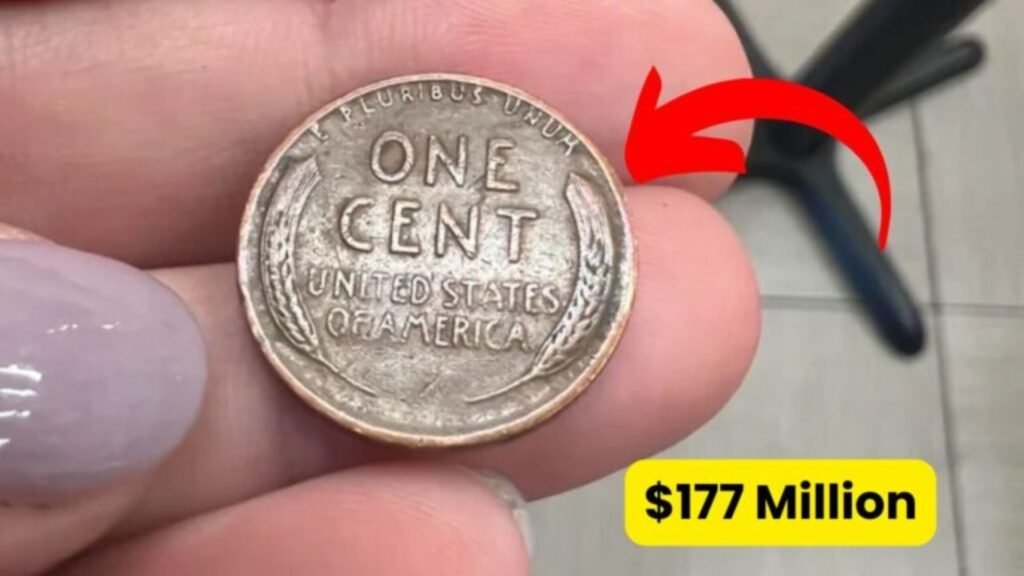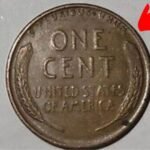Imagine reaching into your pocket for spare change and pulling out a penny worth $177 million. Sounds like a fantasy, right? But in the fascinating world of coin collecting, this dream could be reality. The Lincoln Wheat Penny, a humble coin minted over a century ago, has a rare variant rumored to be valued at an astonishing $177 million—and it might still be circulating today. Let’s dive into the story of this legendary penny, why it’s so valuable, and how you could spot one.
What Is the Lincoln Wheat Penny?
The Lincoln Wheat Penny, often called the “Wheat Cent,” was first minted in 1909 to celebrate Abraham Lincoln’s 100th birthday. Designed by Victor David Brenner, it was the first U.S. coin to feature a real historical figure, with Lincoln’s profile on the front and two wheat stalks on the back. Minted until 1958, billions of these pennies flooded American pockets, making them a nostalgic piece of history.
Most Wheat Pennies are worth just a cent, but certain rare versions have skyrocketed in value due to minting errors, limited production, or pristine condition. Among them, one elusive variant has captured the imagination of collectors, with a rumored value of $177 million.
Why Is This Penny Worth $177 Million?
So, what makes a single penny worth more than a luxury mansion? The answer lies in a perfect storm of rarity, history, and human error.
A Wartime Minting Mistake
During World War II, copper was critical for military supplies, so in 1943, the U.S. Mint switched to zinc-coated steel for pennies. However, a few copper planchets (blank coins) from 1942 were accidentally used, creating the ultra-rare 1943 Bronze Wheat Penny. Experts estimate fewer than 20 of these coins exist, making them numismatic gold.
One such penny sold for $1.7 million in 2010, but in mint condition, its value could soar much higher. The $177 million figure, while speculative, reflects the hype around a potentially unique specimen—perhaps a one-of-a-kind prototype or an error coin in flawless condition.
Extreme Rarity and Collector Demand
Rarity drives value in coin collecting. With only a handful of 1943 copper pennies known, wealthy collectors and investors fiercely compete for them. Add historical significance—minted during a pivotal wartime moment—and perfect preservation (graded MS-70), and you’ve got a coin that could fetch an astronomical price.
The Hype Factor
Online buzz and unverified claims have fueled the $177 million rumor. While no penny has sold for this amount, the possibility of an undiscovered gem keeps collectors on edge. As numismatist Raju Singh notes, “The story of the Lincoln Wheat Penny is about the thrill of discovery.”
Real-Life Treasure Hunts
The idea of finding a fortune in pocket change isn’t just a pipe dream. In 1947, teenager Don Lutes found a 1943 copper penny in his high school cafeteria change. Decades later, after his death in 2019, the coin sold for $204,000 at auction, with proceeds donated to his local library. Stories like this prove that rare coins can hide in plain sight.
Another collector stumbled upon a 1909-S VDB penny—another rare Wheat Penny variant—in a jar of old coins. It sold for over $100,000 due to its low mintage and designer initials. These real-life finds keep the dream alive for treasure hunters.
How to Spot a Valuable Lincoln Wheat Penny
Could you have a $177 million penny in your coin jar? Here’s how to check:
Key Dates and Mint Marks
Focus on pennies from 1909 to 1958. Rare dates include:
- 1943 Copper Penny: Non-magnetic, copper-colored, weighs 3.11 grams.
- 1909-S VDB: Features the designer’s initials and a tiny “S” mint mark.
- 1955 Doubled Die: Shows doubled lettering, especially on the date.
Check under the date for mint marks: “S” (San Francisco), “D” (Denver), or none (Philadelphia).
The Magnet Test
A quick way to spot a 1943 copper penny is with a magnet. Steel pennies stick; copper ones don’t. If you find a non-magnetic 1943 penny, it’s time to call an expert.
Condition Is Everything
Coins in mint condition—crisp details, no scratches—are worth more. Never clean a penny, as it can slash its value. Store it in a protective holder to avoid damage.
Look for Errors
Minting errors like double stamps, off-center designs, or wrong materials (like copper in 1943) make pennies valuable. Examine your coin closely for anything unusual.
What to Do If You Find a Rare Penny
Found a suspicious penny? Don’t spend it! Follow these steps:
- Handle Carefully: Touch only the edges to avoid fingerprints.
- Store Safely: Use a soft cloth or coin holder.
- Get It Authenticated: Contact a reputable grading service like PCGS (Professional Coin Grading Service) or NGC (Numismatic Guaranty Corporation).
- Consult Experts: A numismatist can verify authenticity and estimate value.
Selling a rare coin requires strategy. Auctions, coin dealers, or online platforms like Heritage Auctions can maximize your payout, but professional grading is key to proving its worth.
Is the $177 Million Penny Really Out There?
The $177 million valuation may be exaggerated, with no verified sale reaching that figure. Experts like those at PCGS suggest the highest realistic value for a 1943 copper penny is closer to $10–$20 million in pristine condition. Still, the possibility of an undiscovered coin keeps the numismatic world buzzing.
Pennies are often overlooked, tossed into jars or left in drawers. With billions still in circulation, a rare Wheat Penny could surface anywhere—a vending machine, a piggy bank, or your grandma’s coin collection.
Why This Matters Beyond Money
The Lincoln Wheat Penny isn’t just about dollar signs. It’s a piece of American history, minted through wars, economic hardship, and cultural shifts. Each coin tells a story, connecting us to the past. For collectors, the hunt is as thrilling as the potential payday.
As digital payments rise, physical coins like the Wheat Penny remind us of a tactile, tangible world. Numismatist Johnson, a rare coin expert, puts it best: “Even the smallest things can hold massive value.”
Start Your Treasure Hunt Today
Ready to check your change? Grab a magnifying glass and start inspecting those old pennies. Look for key dates, test with a magnet, and keep an eye out for errors. You might not find a $177 million penny, but even a moderately rare Wheat Penny could fetch thousands.
The Lincoln Wheat Penny proves that treasure can hide in the most ordinary places. So, next time you get change at the coffee shop, take a closer look. That little copper coin might just change your life.



